Playing with the Fourier Transform (I)
[EDIT] This post was extended on 2022.09.
The beauty and power of the Fourier Transform never cease to amaze me. And since several effects in ArionFX are based on it, I have had to play with it a lot in recent times.
As explained in a previous post, diffraction patterns (e.g., the glare simulated in ArionFX for Photoshop) come from the Fourier Transform of the lens aperture. I will use the FT of an aperture mask for visualization in this post.
I will use pow-2 square sizes (my FT implementation is an FFT). Let’s start by this Aperture x Obstacle map output directly from ArionFX for Photoshop v3.5.0.
Aperture x Obstacle mask, rasterized @ 512×512
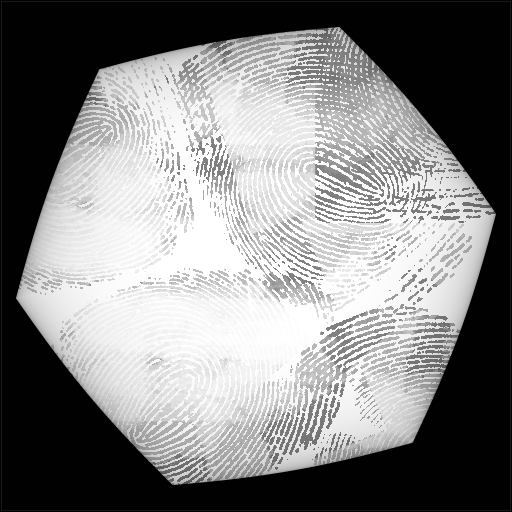
The Fourier Transform of this image, rasterized at that size in said 512px buffer, is the following.
FT of the mask above
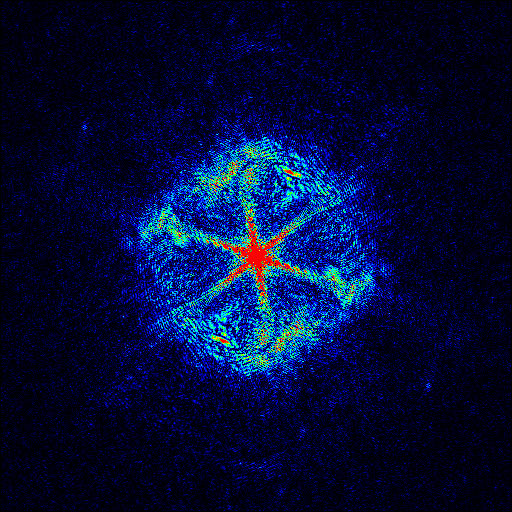
The faux-color is done on the magnitude of each complex number in the FT. All the FT images in this post are normalized equally, and offset to look “centered” around the mid-pixel.
Such diffraction patterns and some heavy convolution magic are what ArionFX uses to compute glare on HDR images:
Resulting glare in ArionFX

Now, let’s focus on what happens to the FT (frequency space) when one does certain operations on the source data (image space). Or, in this exemplification: what happens to the diffraction pattern when one plays with the rasterized aperture mask.
Note that we’re speaking of the Discrete Fourier Transform, so sampling (rasterization, pixelization, anti-aliasing, …) issues are mostly ignored.
Rotation about the center
A rotation of the source buffer about its center doesn’t change the frequencies present in the data; only their orientation. So a rotation in the source data rotates the FT in the exact same way.
As we will see next, this property holds true regardless of the center of rotation, because the magnitude of the FT is invariant with respect to translations.
Rotation about the center
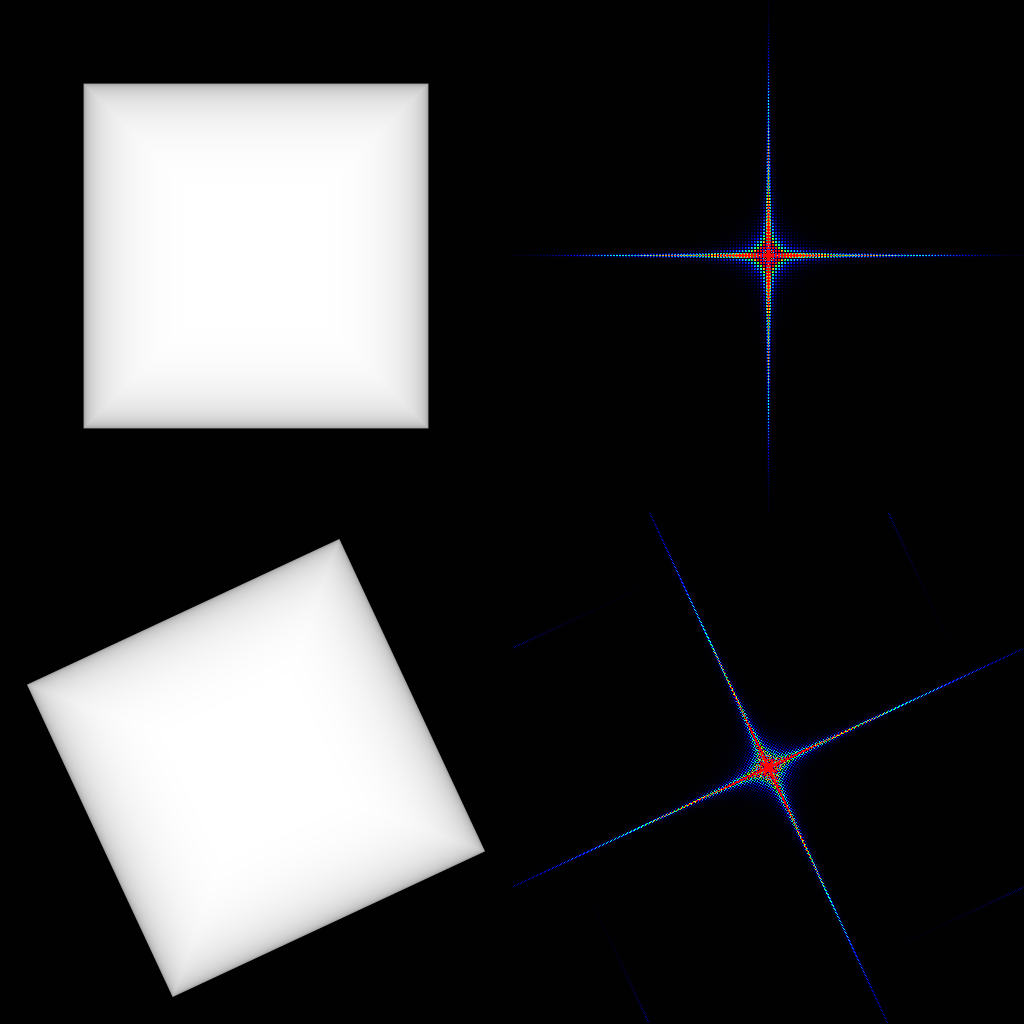
Translation (with wrap-around)
Frequencies arise from the relative position of values in the data field, and not from their absolute position in said field. For this reason, shifting (wrap-around included) the source data does not affect the magnitude of the corresponding Fourier Transform in any way.
Invariance to translation
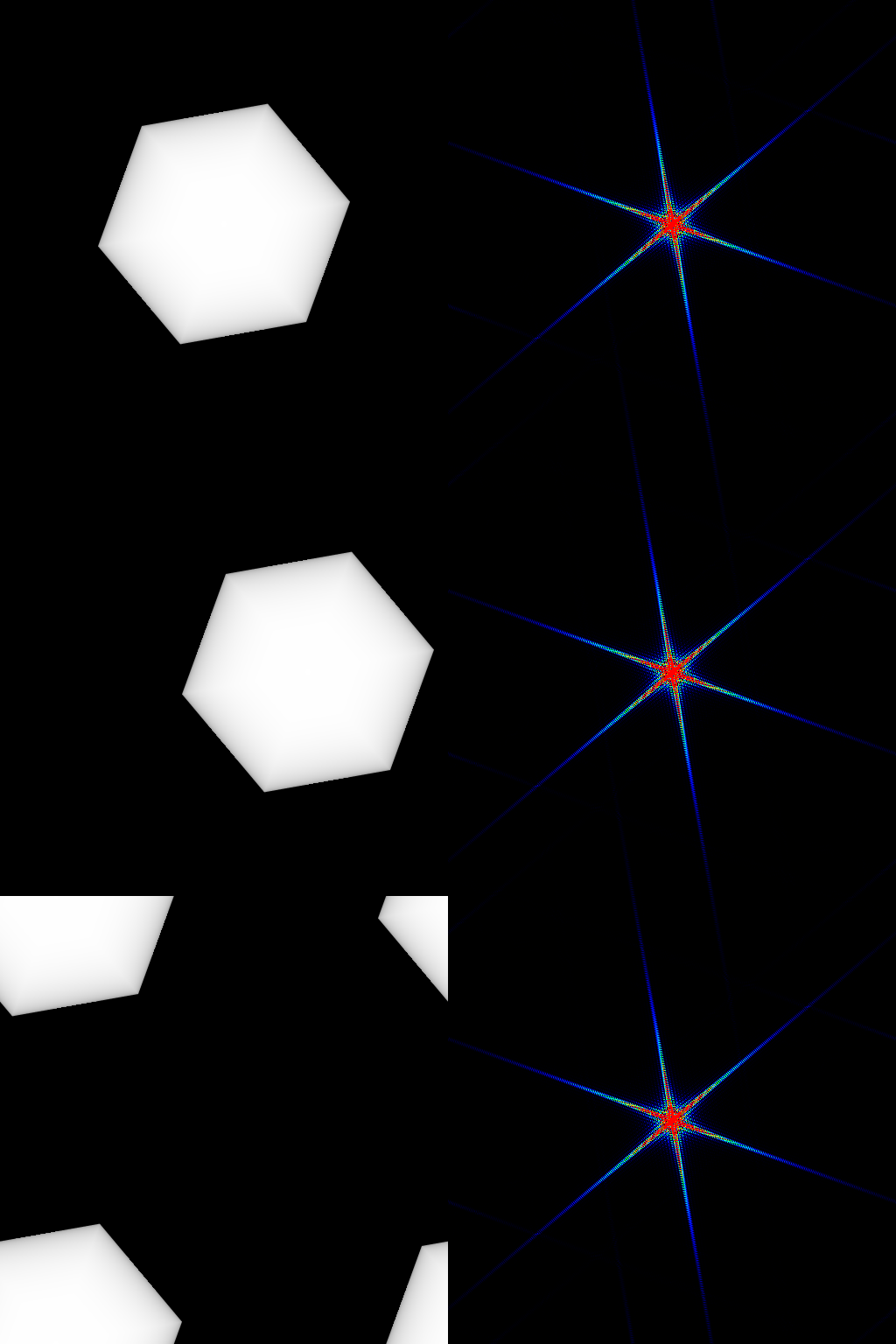
Let’s recall that the idea behind the FT is that “any periodic function can be rewritten as a weighted sum of sines and cosines of different frequencies”. Periodic being the keyword there.
Repetition (tiling)
Tiling the data buffer NxM times (e.g., 2×2 in the example below) produces the same FT, but with frequencies “exploded” every NxM cells, canceling out everywhere else.
This is because no new frequencies are introduced, since we are transforming the same source data. However, the source data is NxM times smaller proportional to the data buffer size (i.e., the frequencies become NxM times higher).
Exploded frequencies on tiling
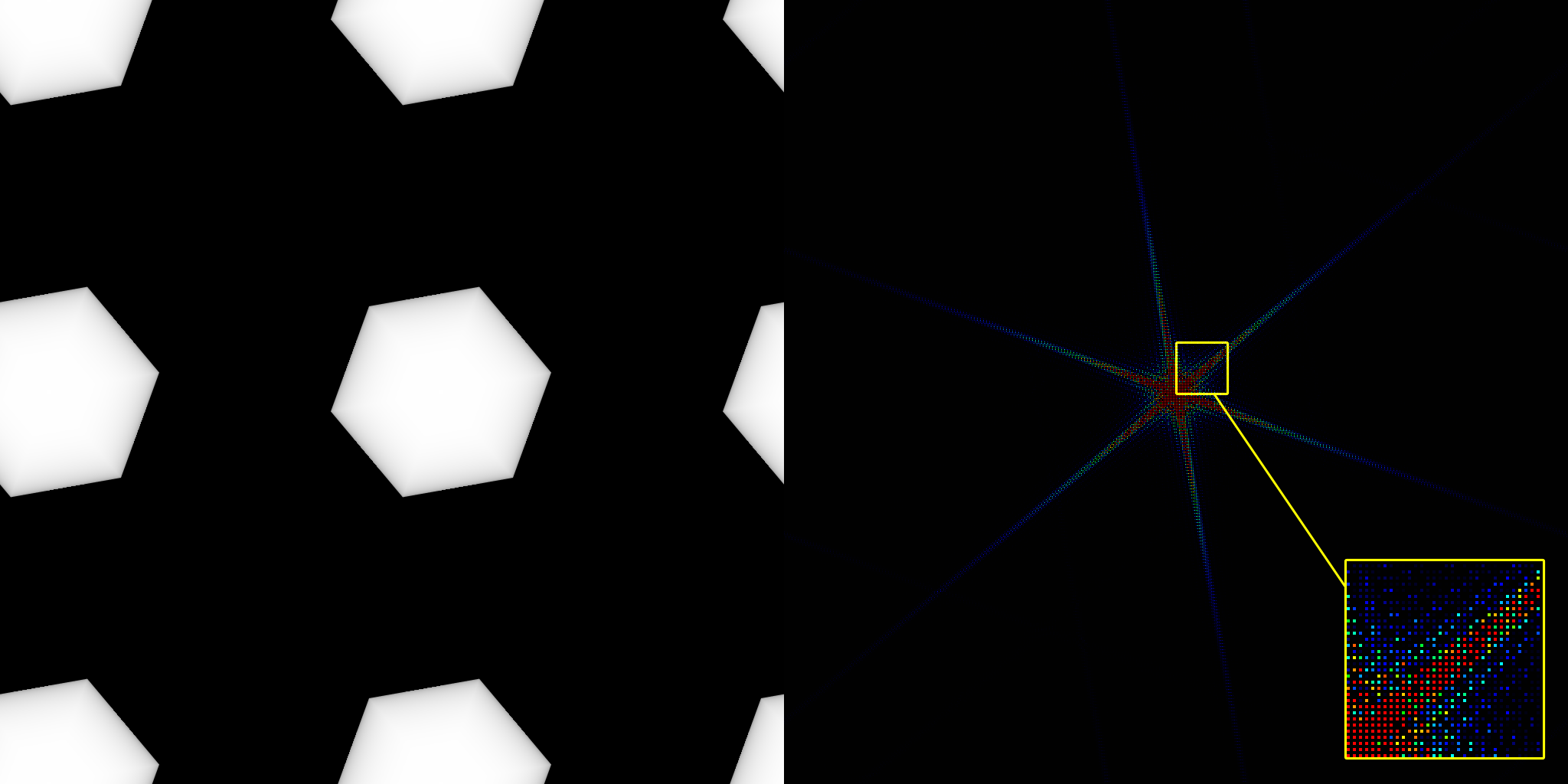
Data scaling
Normalization and sampling issues aside, scaling the data within the source buffer scales the FT inversely.
This is because encoding smaller data produces higher fundamental frequencies, while encoding a larger version of the same data produces lower fundamental frequencies.
Inverse effect on scaling
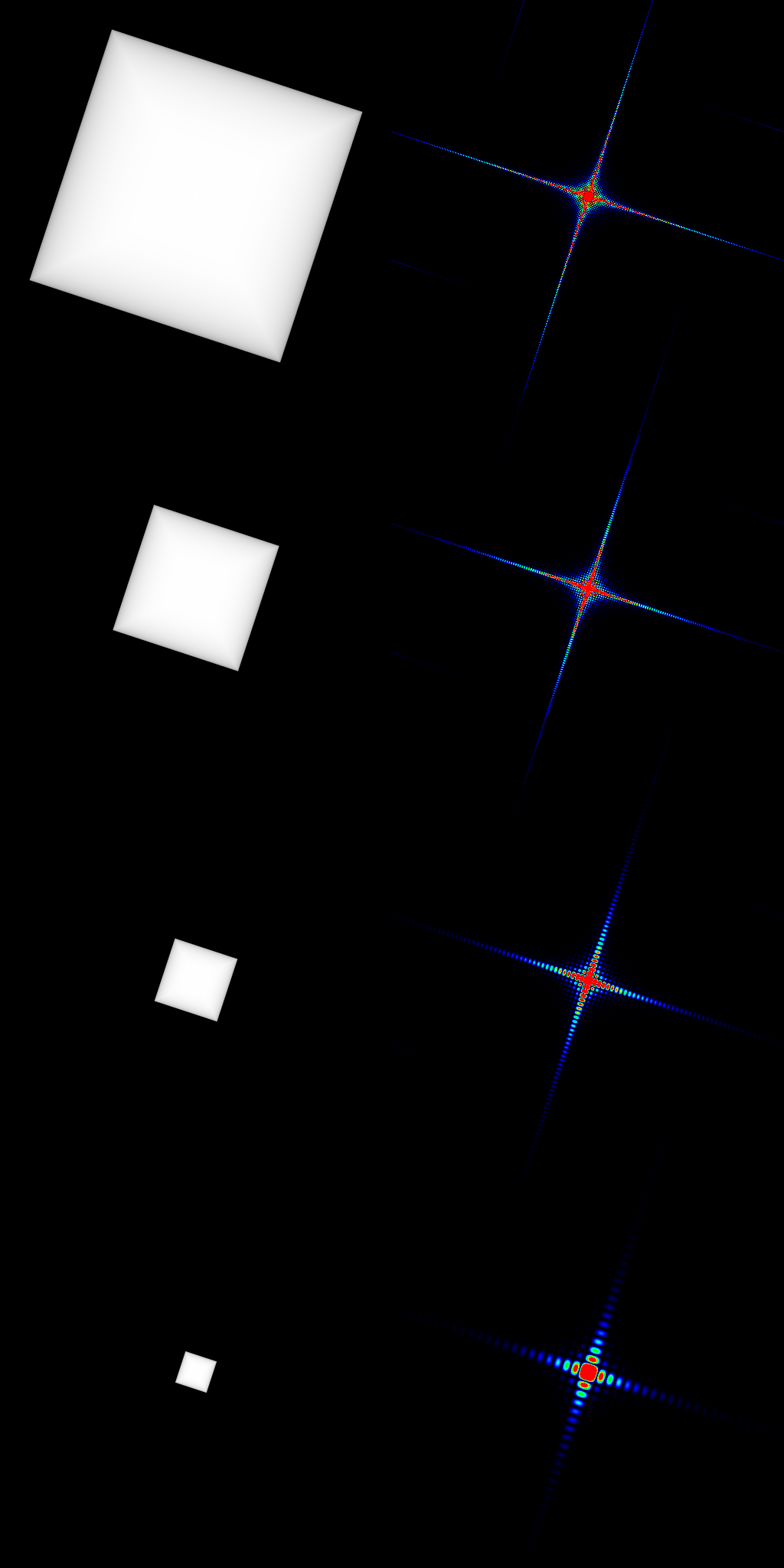
In the particular case of glare (e.g., ArionFX) this means that the diffraction pattern becomes blurrier if the iris is sampled small. Or, in other words, for a given iris, the sharpest diffraction pattern possible is achieved when the iris is sampled as large as the data buffer itself.